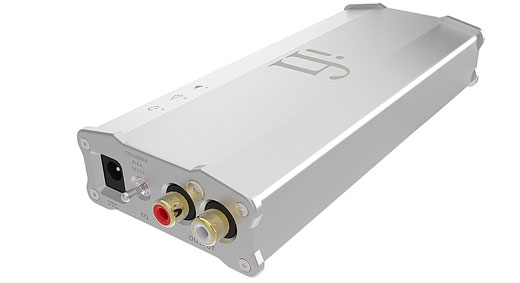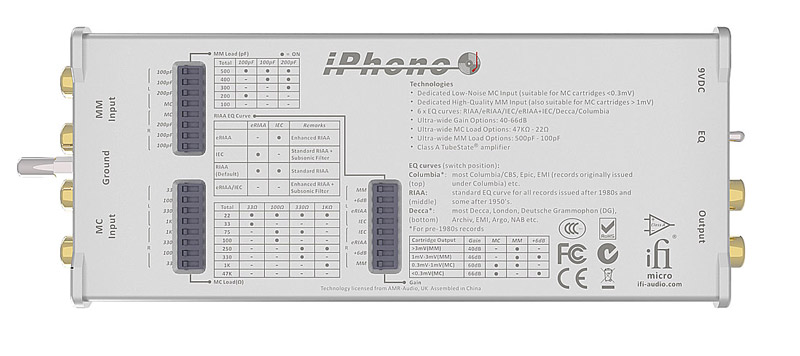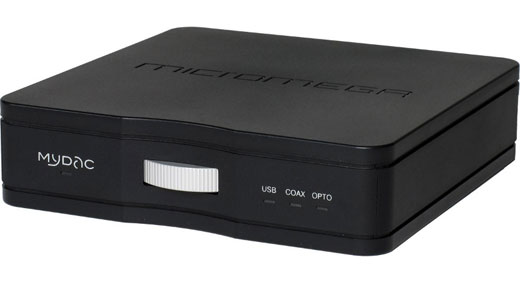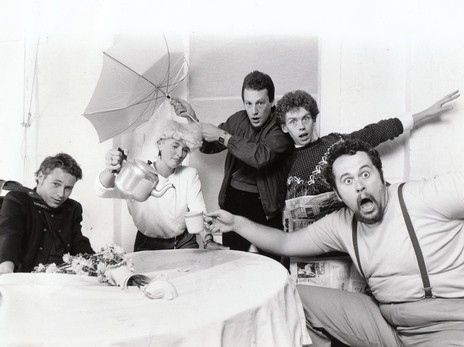$599
5 Stars
At last, a nicely priced phono stage that sounds much, much better than its price suggests.
IT’S COMMON KNOWLEDGE that the market for high-end audio is shrinking year by year, especially in these ‘credit crunch’ times with a certain decrease in expendable income. Sure, the population of new rich in countries such as China is rising and demand for audio exotica will increase where similar lion economies prosper, but the western world has taken a battering in recent years with a flow-on effect in reduced sales of expensive kit.
So, what are the choices for luxury hi-fi manufacturers?
It’s a curly puzzle to be sure: many manufacturers at the mid-price bracket have introduced ranges of budget gear with great acclaim and success (Musical Fidelity’s X series, for instance), but you’re not likely to see companies like Mark Levinson, Krell and Audio Research launch beer-budget affordable audio gear any time soon.
 Reversing this trend is the UK’s Abbingdon Musical Research (AMR), who decided to take on the budget end of the market with the launch of its sister company iFi Micro.
Reversing this trend is the UK’s Abbingdon Musical Research (AMR), who decided to take on the budget end of the market with the launch of its sister company iFi Micro.
iFi has launched four affordable miniature components recently: I reviewed the stunning iDac and matching iUSBPower psu here, and to the combo really knocked my socks off with its seemingly ridiculous price/performance ratio. Not only did the combination sound fantastic, I was also impressed by the build quality and the use of state of the art discrete components within each gleaming silver enclosure. Then there’s the iCan headphone amplifier (not yet reviewed), and this Micro iPhono preamp, which is calculated to be of interest to any vinyl fans. Chief designer Thorsten Loesch (he’s also the top propellerhead for AMR) is reported as saying that he made the iPhono for his own second system, and tricked the company into paying for it: this statement bode well for a fruitful review.
iPhono Tech
The iPhono uses the same chassis as the other three Micro components. This means that tooling costs are shared amongst the range – the same concept behind Musical Fidelity’s original MF X-Series. As with the X-series it shouldn’t necessitate a cheapening of the product in terms of build and aesthetic, and iPhono is built and styled superbly.
Hidden inside the shiny non-magnetic aluminium enclosure is some fairly hefty technology: iFi has developed what they term ‘Tri-brid’ class-a amplification, a mixture of Bi-Polar, J-Fet and advanced discrete componentry that enables a wide 40-66dB gain and as such will accommodate all MM and just about every MC cartridge available. Both moving magnet/moving coil cartridge gain and load are individually adjustable via the vast set of DIP switches on the bottom of the iPhono, and users have the option of six different EQ curves to play around with – the first time I’ve seen this feature on a budget phono preamplifier.

There is the standard RIAA curve, Decca and Columbia (for pre-1980s records), eRIAA (for modern vinyl with excessive phase shift and HF roll-off), IEC:RIAA (standard RIAA with IEC subsonic filter– this will reduce cone ‘flap’) and IEC:RIAA (an enhanced RIAA with IEC subsonic filter). Chances are you’ll probably want to stick with good old RIAA for most records, but it’s fun just tinkering around with these settings. Think of each curve as an optional ‘tone’ control or filter and have a play. A supplied wall wart supplies the necessary voltage to the iPhono.
At 158l x 68w x 28h (mm) it won’t take up a lot of real estate on equipment supports, so it’s an easy component to accommodate on the average (or below average) hi-fi rack.
The System
The iPhono was used in my main system: Audiolab 8200CDQ pre/8200MB mono power amplifiers, Voigt single driver Vofo loudspeakers (and Castle Harlech floorstanders from time to time), while vinyl duties were split between my own Pro-Ject Studie (with aluminium bodied Denon DL103R low output MC cartridge) and the stunning Pro-Ject Xtension 10 Evolution (Sumiko Blue Point Special EVO3).
Cables used were the brand new versions of Nordost’s Blue Heaven interconnect and speaker cable, although the Xtension has a captive Van Den Hul RCA cable, which proved also up to the task. Once I’d tinkered around with the myriad DIP switches on the iPhono (not so easy to be fair as the silk-screened legends were pretty hard to read against the silver chassis) I was ready to give it heaps – vinyl style.
Listening Session
Burning in a phono stage is a tricky thing to do unless you have a ridiculous multi-stacking record player. Once connected to the system I played a few albums without pinning my ears back too much – otherwise it was left for long periods just switched on in a ‘warming up’ mode. After a week or so plodding along like this I decided, cup of tea in hand, to get to grips with the iPhono’s sound quality.
Firstly, I was impressed at how quiet the iPhono was in operation – there was no hum or hiss, just the crackle of the stylus as it entered the lead-in groove. That’s a good sign. Secondly, the iPhono has great sound quality, despite its small price tag. Running the diminutive iPhono against my Audio Innovations P1 tube stage made for an uncomfortable comparison, for the iFi produced more detail and better dynamics while just missing out on that tube euphony. It certainly had boogie factor: tracks from Let There Be Funk held the attention with excellent rhythm and tight, extended bass – The Pointer Sisters’ ‘Yes We Can Can’ really had a great sense of urgency and speed, and the iPhono had an impressive way with its portrayal of the rhythm section’s syncopation, while spotlighting their funky vocals.
Steely Dan’s now classic Aja album is a completely different kettle of fish, part rock, part pop, but mostly jazz-based with a few funk licks here and there. The epic title track is a great workout for any system with bells, gongs, nasal vocals (thanks to Mr Fagen) and a drum performance by Steve Gadd that still gets me going after all these years.
The iPhono cracked this one beautifully, conveying the quiet moments with startling candour and really letting rip during the thunderous drum solos. This track is practically imprinted on my brain because I’ve heard it so many times, but the little iFi did the song justice, capturing the delicate cymbal brushes, cowbell strikes and snare rim shots quite beautifully. There was definitely more low-level detail while playing the track through the iPhono.
Bernardo Bertolucci’s The Last Emperor is a great movie with a fine soundtrack with contributions from David Byrne, Ryuichi Sakamoto and Cong Su featuring mainly Chinese instruments and a bit of Fairlight CMI. Plucked strings had a clearly defined metallic tonal quality to them, with excellent leading edge definition. Gongs and bell sounds had luscious depth and realism, while bamboo and gourd woodwind instruments sounded terrific, with nice timbre and ‘body’.
‘Fast Car’ from Tracy Chapman’s debut album is an absolutely miserable song of doomed hope and a great test of vocals, along with excellent recording quality. Once again, the iPhono came up trumps: Tracy’s plaintive vocal was nicely centred between the speakers and the band underpinned them extremely well – her strummed guitar was also a highlight with good texture and definition, while both bass and drums underpinned the performance in an almost discrete fashion. Nice stuff.
But here’s where it gets interesting: I then compared the same track with my new Sugden Masterclass PA-4 phono stage, a $4000 component. Noticeable was an increase in midrange detail over the iPhono and an improvement in terms of bass depth and control, but the differences weren’t night and day.
Conclusion
iFi is on a serious roll with its range of Micro components. They’re well made, have excellent specs and are almost embarrassingly inexpensive. The iPhono is no exception, proving faultless in operation, and with excellent ‘giant killing’ sound quality.
No, it’s not a reference phono pre, but it’ll give most phono stages under $3K a real fright. GARY PEARCE











I’d love to know how the iphono compares to the previously tested Graham Slee Gran Amp 2, or SE2. Sounds like a great battle between the bargain priced phono amps, how about it????
A shoot out would be cool. I would like to see the iPhono, Rega Fono MM or MC (newest version), Gram Slee and perhaps Lounge Audio LCR MKII.